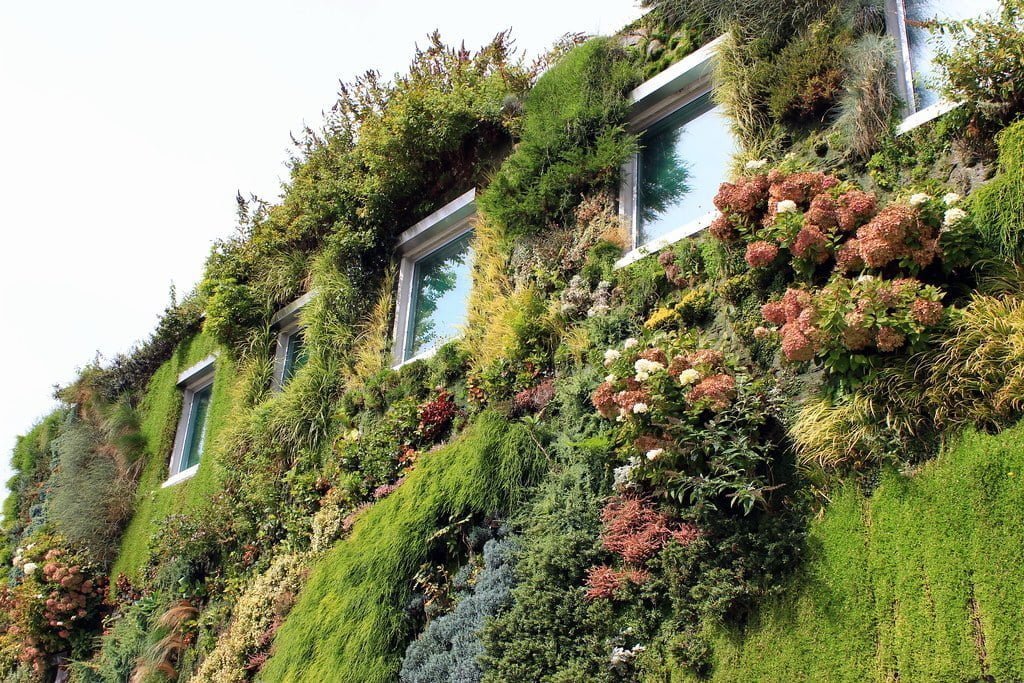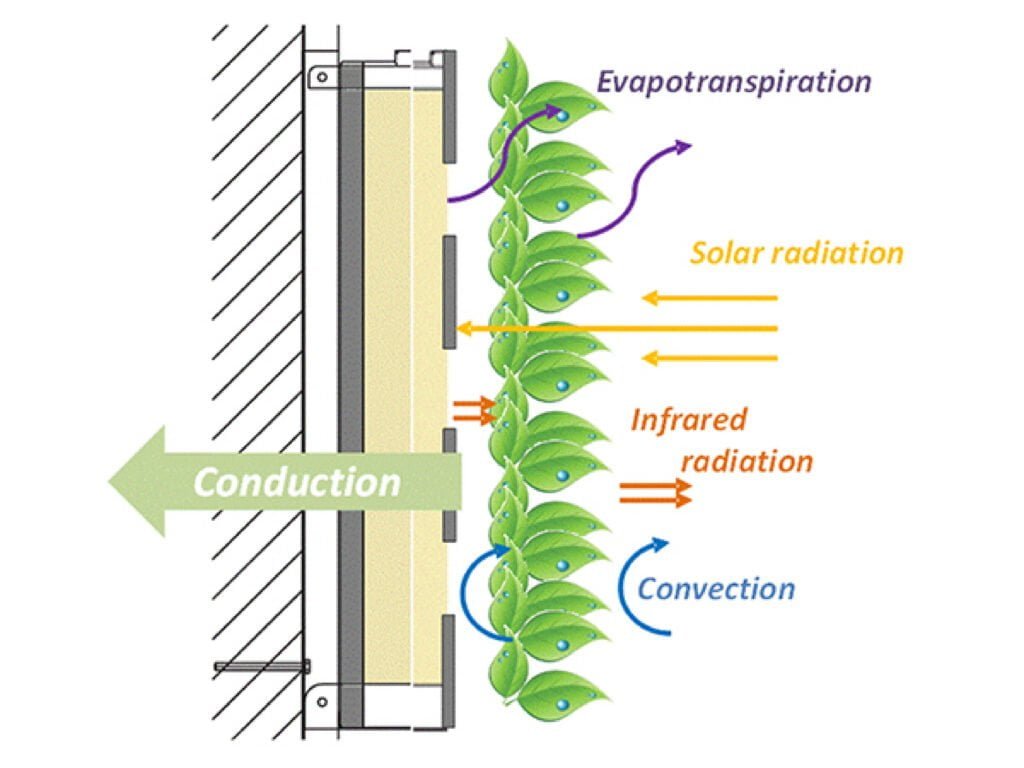Posted by Sophie Nichols on Tue, Apr 26, 2022 @ 2:10 AM
Can Living Green Walls help alleviate the impacts of Climate Change?

Earlier this year, the United Nations Intergovernmental Panel on Climate Change (IPCC) released their starkest report on the impacts of climate change, depicting the threats to both civilisations and ecosystems around the world.
The report documented that the effects of climate change have already impacted human health, livelihoods, and key infrastructure, particularly in urban settings. Hot extremes including heatwaves have intensified in cities, where they have also aggravated air pollution events and limited the functionality of urban infrastructure systems and services.
Essential infrastructure, such as transportation, water, sanitation, and energy systems have been compromised by both, extreme and slow-onset climatic events, resulting in economic losses, disruptions of services and impacts on human well-being.
Through an egalitarian lens, the report observed that these impacts are concentrated amongst the economically and socially marginalized urban residents. Climate change is effectively exacerbating existing social, economic, and environmental drivers of risk, especially for vulnerable groups who already lack access to essential services.
The authors of the report, urgently recommend an appropriate, widespread coordinated effort to adapt our urban environments to more extreme climatic conditions.
They believe that by improving existing and new infrastructure projects, our built environment can become more resilient to climate risks in the long term.
One way of achieving urban resilience is by providing greater access to ‘green infrastructure within our cityscapes. Green infrastructure refers to all types of vegetation that provides environmental, economic, and social benefits such as clean air and water, climate regulation and places for recreation.
An example of green infrastructure that can directly limit the effects of climate change within our urban environment is green walls, also termed living walls or vertical gardens. Green walls can form an important part of a wider strategy to increase the sustainability of our built environments by regulating temperatures and improving air quality.
Related: Are Green Living Walls Challenging to Maintain?
Regulating temperatures

According to Dr Irga, from the University of Technology in Sydney, Australia
‘thermoregulation is one of the most researched benefits of green walls.’
He explained that ‘green walls can reduce high temperatures within buildings by intercepting solar radiation and through evaporative cooling.’
Conversely, temperature regulation is not just limited to heat reduction, as the insulation ability of green walls can also be of benefit in cold climates too. Through controlling temperatures, green walls enable buildings to be less reliant upon heaters and air conditioners, resulting in reductions in energy consumption.
Improving Air Quality
The natural, biological processes of green walls can improve air quality in the home and in urban settings by removing polluting air particulars.
The plants used within the green walls can capture airborne particles on their foliage and, with the associated microbial community, degrade a range of gaseous pollutants, including volatile organic compounds (VOCs).
VOCs are generated by motor vehicles, fires, industrial processes, and consumer products like paint. Some are highly toxic and prolonged exposure may increase the risk of health problems.
Aside from absorbing VOCs, green walls are also able to absorb carbon dioxide (CO2). All plants including those grown inside, or on the side of buildings, act as natural carbon dioxide filters. They absorb CO2 from the air to fuel the photosynthesis which allows them to grow and thrive. Presently, more research is needed to determine the most effective CO2 absorbing plants for vertical gardens.
Citygreen’s™ Living Wall system
Citygreen’s™ Living Wall system is the leading green wall product that can directly alleviate some of the risks created associated with climate change, by creating greener, cooler, and more liveable cities.

Citygreen’s™ Living Wall system embodies nearly
15 years of research, development, and product testing.
The design is available in nine standard panel sizes; however, it can also be engineered to retrofit walls on unique buildings.
The system is designed for quick and efficient installation for large scale commercial projects or smaller residential projects, with minimum disruption. The Living Wall system has irrigation lines embedded in a moisture retention layer to ensure optimal water distribution and water efficiency.
This enables both rapid and healthy plant growth post-install.
The assembly of the Citygreen’s™ Living Wall system incorporates a waterproofing layer, a moisture retention layer, and a breathable fabric layer with pockets for the soil so that a wide variety of plants can be selected and grown within the system.

Conclusion
The ability to adapt our urban centres to the unfolding risks of climate change is becoming ever more urgent.
Urban populations, particularly those in marginalised areas, are exceedingly feeling the impacts of more intense weather patterns.
Citygreen’s™ Living Wall system is a product that once installed, can rapidly start to alleviate some of the impacts of climate change, by regulating ambient temperatures, improving air quality conditions, and absorbing CO2.
References
P.J. Irga, et al, The distribution of green walls and green roofs throughout Australia: Do policy instruments influence the frequency of projects? Urban Forestry & Urban Greening, 24, 2017, 164-174.

